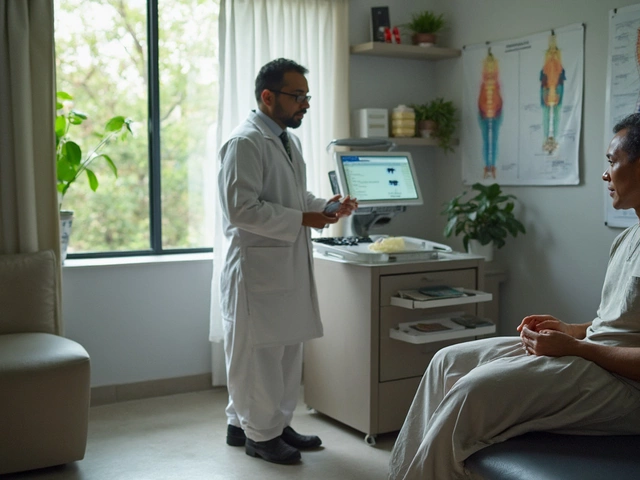ADHD in Adults – What You Need to Know
Most people think ADHD is a childhood problem, but millions of Indian adults live with it unanswered. If you’ve ever felt restless, missed deadlines, or struggled to stay focused at work, you might be looking at adult ADHD.
Recognizing Adult ADHD Symptoms
Unlike kids, adults often hide their hyperactivity. The signs show up as chronic disorganization, forgetfulness, and a habit of starting projects without finishing them. You may notice a constant mental “ping‑pong” where you jump from one thought to another, or a tendency to hyper‑focus on things that interest you while everything else blurs.
Other red flags include trouble sitting still during meetings, speaking before thinking, and feeling impatient with routine tasks. If you’ve tried different coping tricks and nothing sticks, these patterns could point to ADHD.
Getting the Right Diagnosis
The first step is a professional assessment. A psychiatrist or clinical psychologist will ask about your childhood behavior, current challenges, and family history. Structured questionnaires like the ASRS (Adult Self‑Report Scale) help quantify symptoms.
Doctors also rule out conditions that mimic ADHD, such as anxiety, depression, or thyroid problems. Since you’re probably taking prescription medicines, a toxicology check is useful – some drugs can worsen attention issues or interact badly with ADHD medication.
In India, getting a diagnosis can be faster through tele‑consultations, but a face‑to‑face visit remains the gold standard for thorough evaluation.
Once diagnosed, treatment usually combines medication, therapy, and lifestyle changes. Stimulant drugs such as methylphenidate and amphetamines are common, but they carry side effects like increased heart rate, insomnia, or appetite loss. Non‑stimulants (atomoxetine, guanfacine) work for people who can’t tolerate stimulants.
Because our site focuses on medicine safety, we stress the importance of checking the dosage, formulation, and any hidden additives that could be toxic. Choose reputable pharmacies and ask your doctor about possible drug interactions, especially if you’re on antihypertensives or antidepressants.
Behavioural therapy teaches skills to manage time, set realistic goals, and break tasks into smaller steps. Cognitive‑behavioural approaches can also reduce negative self‑talk that often accompanies undiagnosed ADHD.
Everyday strategies make a big difference. Use a single planner – paper or digital – and stick to a weekly review routine. Set alarms for appointments, and break large projects into 15‑minute chunks with short breaks in between.
Physical activity isn’t just good for the heart; it boosts dopamine, which helps attention. A quick walk, yoga, or short exercise burst before a demanding task can improve focus.
Nutrition matters, too. Balanced meals with protein, omega‑3 fatty acids, and limited caffeine keep energy stable. Avoid relying on energy drinks that may mask symptoms but increase heart strain.
Mindfulness and meditation train the brain to stay present, reducing the mental chatter that fuels distraction. Even five minutes a day can smooth out impulsive reactions.
Finally, keep an open line with your doctor. Regular check‑ins help adjust medication doses and catch any side effects early. If you notice new symptoms, report them – sometimes a tweak in dosage or a switch to a non‑stimulant solves the problem.
Living with adult ADHD isn’t a life sentence. With the right diagnosis, safe medicines, and practical habits, you can turn chaos into a manageable rhythm and reclaim productivity.

Unveiling the Dark Side of Adult ADHD: Challenges and Insights
ADHD in adults is often misunderstood and underestimated, leading to significant challenges in daily life. This article explores the lesser-known effects of ADHD, from relationship struggles to career difficulties. By understanding the dark side of ADHD, adults can seek effective therapies and improve their quality of life. The article also covers coping strategies and the importance of professional support. Personal stories and expert tips are provided to illuminate the complexities of managing ADHD as an adult.




